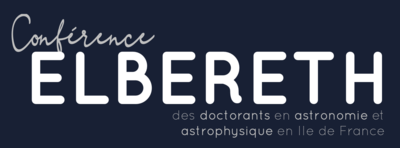The last and unique measurement of the CMB blackbody spectrum was made by COBE-FIRAS in 1991. However, deviations from the perfect blackbody spectrum serve as a probe of the thermal history of the universe. To test the technology and feasibility of a space mission aimed at measuring these so-called spectral distortions, the balloon-borne mission BISOU (Balloon Interferometer for Spectral...
A presentation on adaptive optics, how it can be used in microscopy, the main differences and difficulties when compared to astronomical applications. I will then give some details on my use case of clarified rat’s brain imagery.
Optical interferometry enables levels of resolution beyond the capabilities of current direct imaging telescopes by coherently combining light from multiple apertures. When applied to a single telescope, it enhances resolution up to the diffraction limit of the telescope, helps to mitigate the effects of atmospheric turbulence and enables spectro-imaging.
Considering these advantages, my talk...
The search for alternative theories of gravity is motivated by several considerations, such as Dark Energy, or the existence of singularities in General Relativity. A general subclass of modified gravity theories are scalar-tensor theories, which have been developed in the last decades. It is rather interesting to search for observables that could constrain those theories. Black Holes are...
The characterisation of cosmic dust properties is key for understanding, among other things, planet formation processes. Astronomical observations provide us information from which it is possible, but not trivial, to deduce physical properties of cosmic dust. For instance, recent observations of 12 young protostars found dust emissivity indices with values β < 1 [Maury et al. 2019, Galametz et...

